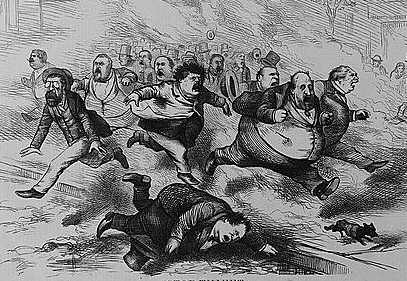
"Hue and cry" was a term used in English criminal law as early as 1275 and commonly applied in colonial North Carolina. Any person aware of a robbery or felony was required to raise a hue and cry "with horn and voice" to create an alarm for the pursuit and capture of the criminal. The person raising the alarm was expected to describe the offender and tell which way he or she had gone. The constable in the adjoining precinct was to take up the chase, and so on, "till the Offender is apprehended, or pursued to the Sea Side." Goods retaken from thieves were to remain in the custody of the officers who apprehended them "till Restitution is awarded by the Justices."
An example of hue and cry occurred on 9 Oct. 1697, when the provost marshal or his deputy was ordered to search for John Griffen "and to make hue and cry after him from place to place and him being found to apprehend and safely to convey [him] to the provost marshall." Full provisions of hue and cry were set forth in The Office and Authority of a Justice of Peace, published in New Bern in 1774 by James Davis, the provincial printer. The system was not always successful, however. In March 1721 the marshal informed the court that he "had pursued [a felon] by Hue and Cry to the Uttmost Limitts of the Government and that he could not be taken within the Same," so the case was dismissed. Even so, in the absence of a faster means of pursuing criminals, the North Carolina Assembly in 1749 reenacted the statute of 17 Elizabeth (1585) concerning the hue and cry law.